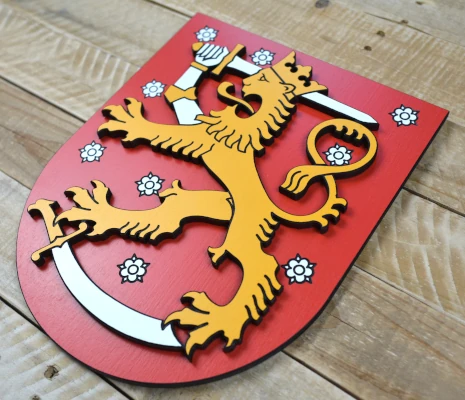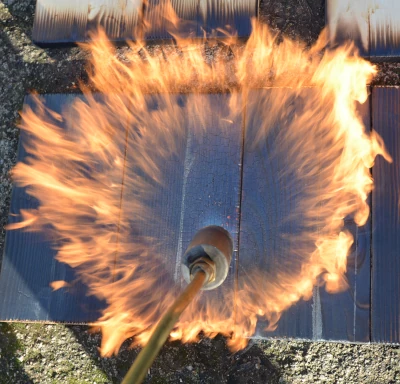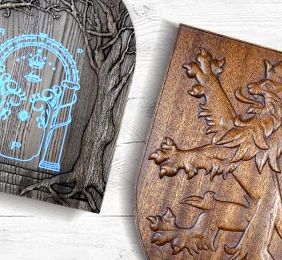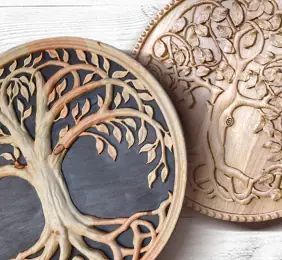Manufacture of 3D Coats of Arms and emblems from solid wood

In a world where modern technology has merged with traditional craftsmanship, we make 3D solid wood crests and emblems that bring history to life and bring a unique expression to your space. The process begins with the careful preparation of a 3D model, which forms the basis for our next steps - from material selection, to hand cleaning and sanding, to the application of a high-quality, health-safe coating.
The first step is to create a detailed 3D model, which serves as a template for CNC milling. We use specialized software that allows us to accurately design and prepare the model so that the final product faithfully matches the design and complexity requirements.
Material selection is the next important step. We strive to select only the best solid wood or solder that not only adds strength and durability to the product, but also natural beauty. Each piece of wood is carefully selected for its texture, color and overall quality to best complement the design and style of a particular crest or emblem.
After the material is selected, the CNC milling process follows, where our 3D models are transformed into their real form. Thanks to the precision of the CNC machine, we are able to achieve the high level of detail and accuracy that is essential for creating 3D crests and emblems. This step is the most time consuming, usually involving dozens of hours of milling for maximum quality.
After carving, all parts are carefully cleaned and sanded by hand to remove any imperfections and bring out the natural texture of the wood. This step is key to achieving a smooth and aesthetically pleasing surface that is ready for further finishing.
The final step is the application of a high quality and health-safe coating. We choose paints, oils and waxes that are not only resistant to damage and UV rays, but also safe for long-term contact. This allows us to guarantee that our crests and emblems are not only beautiful, but also durable and safe for your environment.
Every step in our manufacturing process is done with love and care, from the initial design to the final execution. The result is an original 3D solid wood coat of arms or emblem that is an original piece of history ready to enliven any interior.
You can find our solid wood coats of arms in our category Wooden Coats of Arms.
Manufacture of layered Coats of Arms and emblems
Not only do we bring history to life through coats of arms, but we also bring exclusive pieces of art into your home. These high-quality coats of arms are crafted with high precision and exquisite detail on a CNC machine. Learn how these beautiful pieces of craftsmanship are created.
The first step in the process of making crests is selecting the material. We use plywood or MDF of various thicknesses, which are chosen according to the size of the finished product and the individual pieces. Plywood/MDF is a stable homogeneous wooden material, which is very suitable for CNC processing and for the production of coats of arms or emblems due to its stability.

The wooden plywood is then carefully sanded to make it smooth and free of any unevenness. The surface is then painted twice with a high quality Austrian Adler paint. It is then covered with a stencil foil and the material is ready for the next step - cutting on the CNC machine.
Cutting is a critical part of the whole process as great precision and detail must be maintained. The Stepcraft M.1000 CNC machine ensures precise cutting to our computer designed crest models. Preparing the models for CNC machining is time consuming, but it is the most important part of the manufacturing process.
Once all parts are cut, they are hand cleaned and hand painted to the desired look. This hand finishing ensures that each coat of arms is unique and has a distinctive touch that cannot be achieved through mass production. Each coat of arms comes with a dowel and a clip for hanging on the wall. This means that once you receive your coat of arms, you can easily hang it up.
Making coats of arms is a passion for us. We strive to maintain historical accuracy and quality craftsmanship in every step of the process. We offer a wide range of coats of arms, whether you are looking for national, historical or other coats of arms. Each coat of arms is the result of meticulous work and reflects our passion for history and art.
You will find the featured layered coats of arms in our Wooden Coats of Arms category.
Manufacture of rustic wooden flags

Our way of creating original wooden flags is as unique as the products themselves. Each flag is the result of handmade craftsmanship, careful selection of materials and the use of traditional and modern techniques. From sourcing the material, whether new wood from the store or old wood with a patina from barns and pallets, to the final burning of the Woodflag logo, every step is carefully considered and executed with passion.
We begin by removing metal objects from the wood, which sometimes includes hand-forged nails, and continue by grading the wood by size. Some planks are joined into larger units, others are ready to use. After planing, the wood undergoes the Shou Sugi Ban tanning process, which not only enhances its beauty but also increases its durability.
Brushing reveals the unique texture of the wood, with the harder layers remaining dark and the softer layers becoming lighter. This effect gives each flag a distinctive character. This is followed by a careful coating with a quality Adler paint, suitable for toys, which ensures that the flags will remain beautiful for many years even when placed outdoors, as long as they are not directly exposed to water.
When assembling the flag, we make sure that all the parts fit together perfectly and we join them with wooden strips. An important aspect is the ability to adapt the flag to changes in temperature and humidity, which is a natural property of wood. The final step is to burn our logo on the back of the flag, which guarantees authenticity and quality.
Our flags are not just products; they are an expression of tradition, craftsmanship and love for wood. They are proof that even in this age of digital technology and mass production, there is a place for craftsmanship that brings a warm and distinctive atmosphere into our homes. Each WOODFLAG flag is an original that brings a piece of nature and art into your space.
Flags featured can be found in our Wooden Flags category.


